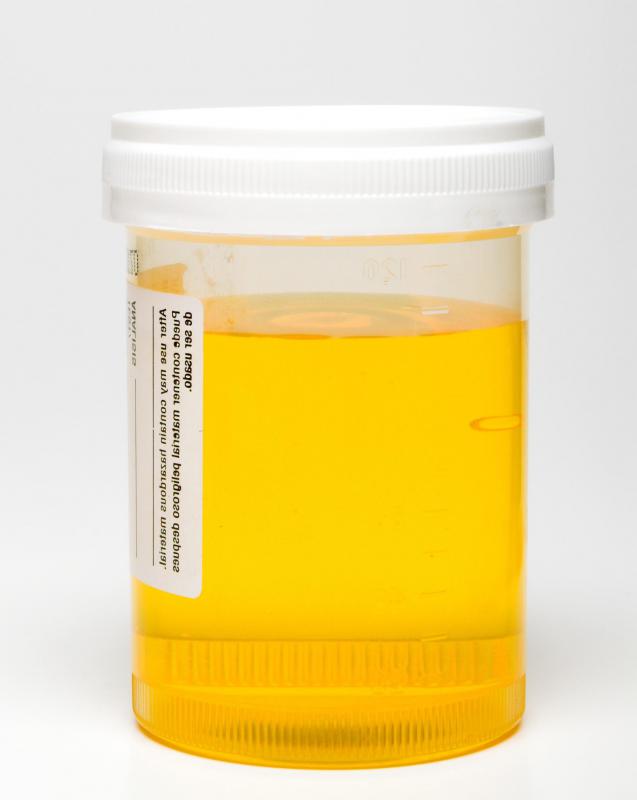At TheHealthBoard, we're committed to delivering accurate, trustworthy information. Our expert-authored content is rigorously fact-checked and sourced from credible authorities. Discover how we uphold the highest standards in providing you with reliable knowledge.
How Do I Interpret My Urinalysis Results?
A urinalysis is a routine screening that your physician may order as part of a physical exam or as a test to diagnose certain illnesses. In some illnesses, such as diabetes or kidney failure, certain substances appear in the urine long before patients exhibit symptoms. Interpreting your urinalysis results involves looking at the levels of the substances found in the urine and comparing them against the average levels found in that of a healthy individual.
When lab technicians receive urine samples for analysis, they start by looking at the color and clarity of the samples. While healthy urine is usually very pale yellow or colorless, food and other medications can alter its color. If the urine is listed as cloudy on your urinalysis results, it may indicate the presence of bacteria or white blood cells. Technicians use the color and clarity as a guide to help determine whether additional tests are needed.

The list of substances found in your urine can tell you a lot about your body. Healthy urine is primarily made up of urea, chloride, sodium, potassium, and creatinine, in that order. It should not contain protein, ketones, white blood cells, or measurable amounts of nitrate. If your urinalysis results show any of these substances, your doctor may order additional tests to determine their exact cause. Typically, healthy urine does not contain glucose, except occasionally during pregnancy, and its presence is a strong indicator of diabetes.

Your urinalysis results will list the specific gravity of your urine, which uses a special scale called a calibrated refractometer to measure the amount of materials dissolved in your urine. Normal results range between 1.010 and 1.020 on the scale. Lower numbers may indicate over-hydration or kidney problems. Dehydration, infection, or too much salt in your diet may cause higher numbers.

A urinalysis also measures the pH balance of your urine to determine its acidity. Healthy urine ranges between 6.5 and 7.25 on the acid-base scale. A low pH level on your urinalysis results indicates urine that is more acidic than normal, which can be the result of eating spicy, acidic foods. A high pH balance may be caused by taking antacids, but can also indicate a higher susceptibility to infection.

Healthy urine is sterile, meaning it contains no bacteria or microorganisms. If an infection is suspected, lab technicians look at the urine under a microscope. The presence of any bacteria on your urinalysis results usually indicates an infection. In women, bacteria from the vagina can find its way into a urine sample if careful measures are not taken to ensure a clean sample.

Typically, your physician will go over any abnormal urinalysis results during a follow-up visit. If you notice any abnormalities that you feel your doctor missed, or if you have any additional questions, be sure to talk to your doctor about them. It's important to remember, thought, that abnormal results do not always indicate the presence of disease. Many factors can interfere with the test, including use of herbs and medications or consumption of certain foods and beverages before the test.
AS FEATURED ON:
AS FEATURED ON:

















Discuss this Article
Post your comments